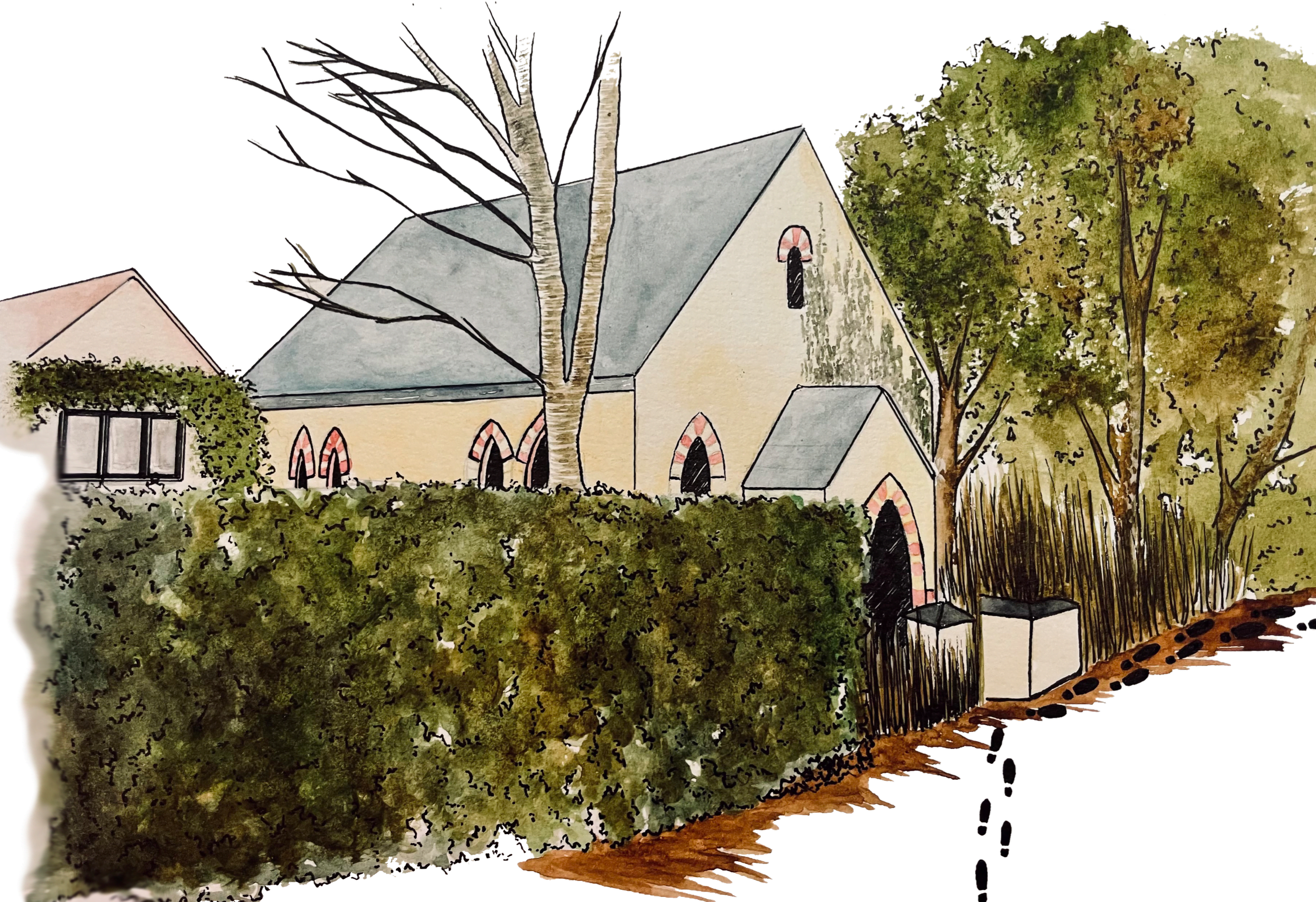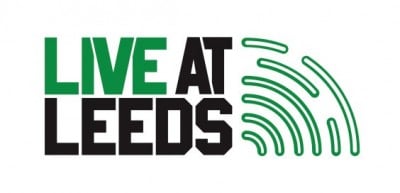The year is 2004, and an album cover with a retro filter peeks from the back pocket of every music enthusiast in South Yorkshire. The demo, christened ‘Beneath the Boardwalk’ by a distributor, has been forwarded, file-shared, and burnt into CDs for issuing. It is the match that will light the nation ablaze with Arctic Monkeys-induced frenzy.
At the time, the band was little-known but their potential was promising. ‘Beneath the Boardwalk’ – featuring eighteen songs – was the fruit of two years of practice. Their seemingly relaxed attitude and casual drawl hid an unyielding work ethic that allowed the band to leap from a mimed performance of Oasis’ ‘Morning Glory’, with Turner on a tennis racket rather than a bass guitar, to one of the greatest rock bands ever. The Arctic Monkeys’ origin story began in a garage, drawing parallels to the garage rock bands that inspired them.

I walked through the leafy residential district of High Green, its quiet streets and toy town ambiance, an almost comical contrast to Arctic Monkeys’ full-throated tracks. It was in this Sheffield suburb in mid-2002 where Alex Turner assumed the role of lead singer after two schoolmates refused to, where Andy Nicholson fumbled hesitantly with bass guitar strings until he could play fast licks using the whole fretboard, and Matt Helders honed his skill at the drums.
One year of fleshing out and fine-tuning an understanding of their respective instruments culminated in a gig at ‘The Grapes’ pub in Sheffield City Centre. Despite the event occurring two decades ago, its retelling persists like an urban myth, bringing a rare vivacity and spirit to the place. Legend says they were paid twenty-seven pounds for a small number of covers – including the White Stripes’ ‘Hotel Yorba’, the Undertones’ ‘Teenage Kicks’, and songs by Fatboy Slim, The Beatles, and Jimi Hendrix – which were punctuated by some of the band’s own music.
The performance lasted less than half an hour, but the story goes that this did nothing to soothe the twisted nerves of Arctic Monkeys’ introverted frontman.

…tells of inner tumult during Arctic Monkeys’ beginnings, exploring the dreams and ambitions of a young Turner through retrospective eyes.
In the summer of 2003, Alex Turner, whilst supporting the funk band ‘Judan Suki’ as guitarist and recording with them in Sheffield’s 2fly Studios, requested a chance to record a demo with his band ‘Arctic Monkeys’. Alan Smyth, having recognised a rare musical flair, agreed. They produced three-song demos in studio and practised in Yellow Arch Studios in Neepsend between sessions. The resulting demo, ‘Beneath the Boardwalk’, was handed out at their performances.
The venue is open to the public as a bar and for live music events, and whilst I haven’t conjured up any pioneering melodies (yet) in the recording studio, I would recommend sipping a drink in the sun-yellow garnished courtyard.

Arctic Monkeys’ live shows were filmed by photographer Mark Bull, who threaded the clips together to create a patchwork of insight into the lives of the bandmembers on tour. The recordings offered glimpses into their trademark authenticity – each member sporting an easy smile during long car rides between shows and gruelling rehearsals, rather than the overly-polished, stiff picture of glamour that usually dominates the forefront of the music scene. The outcome was used as the music video for ‘Fake Tales of San Francisco’, which was posted on Bull’s website along with a selection of pieces from ‘Beneath the Boardwalk’. The song was also included in Arctic Monkeys’ first Extended Play, ‘Five Minutes With The Arctic Monkeys’, which was released in May 2005 on their own ‘Bang Bang’ label.
…pays homage to their roots and condemns “bandwagon” bands that try to present a commercialised image of themselves.
The band later signed to Domino Recording Company, owned by Laurence Bell, in June 2005. In true Arctic Monkeys fashion, their choice was centred on the genuine nature of the label – Bell preferred to operate from his flat, working with hand-picked bands with whom he shared a passion for music, and commercial success taking a back seat.
Another hard-earned triumph was in the cards; a fan-made account on MySpace had amassed enough following to help catapult Arctic Monkeys to national attention. They undertook their first countrywide tour – playing at notable venues including Sheffield’s ‘Leadmill’ on July 31st, Bramham Park at the ‘Leeds Festival’, and Richfield Avenue at the ‘Reading Festival’ in August of the same year.
As a proud owner of a Leadmill Regulars card, I can safely vouch its reputation as a ruby beacon of refuge for fans of indie music, with Turner going as far as giving up his Stratocaster guitar in a charity raffle to help prevent the venue’s closure.

…played to rapid-fire drums and an organ intro, crafting a tense rhythm that evokes the suffocating demands of live performance and rising fame.
The release of their debut album ‘Whatever People Say I Am, That’s What I’m Not’ in January 2006, which they had finished recording in Lincolnshire’s Chapel Studios in September 2005, opened the floodgates for chart-topping hits, international successes, and headlining concerts. It featured their debut track ‘I Bet That You Look Good On The Dancefloor’; a veritable tour de force centring on “dirty dance floors and dreams of naughtiness” – expressed in lyrics that showcase Turner’s knack for brilliant observation of the human condition neatly packaged in an enigmatic metaphor.
With its down-to-earth quality that characterises Arctic Monkeys, along with its crisp and fast-paced rhythm, the song caught the attention of Zane Lowe, who then broadcasted it on BBC Radio 1. ‘Whatever People Say I Am, That’s What I’m Not’ was the fastest-selling debut album in UK chart history.

…portrays an archetypical love-crazed character in the song. Possibly inspired by the tidal wave of admirers that stardom brought with it.
This pivotal moment in Arctic Monkeys’ legacy was defined by an ability to maintain momentum in an industry where new talent becomes discarded by the mainstream seemingly overnight. A five-track EP was released a mere three months after their debut album. Its title, ‘Who the Fuck are the Arctic Monkeys?’, appeared to serve as a humorous reminder of their determination to endure.
Arctic Monkeys’ success came at a high price. A rising torrent of press interviews, tours, and recording sessions inundated them, leaving little room for breathing – let alone time to attend to personal worries.
Andy Nicholson opted out of the ensuing North America tour for health reasons. Upon their return, the band members fixed a date for a meeting, of which Andy was informed that his replacement, Nick O’Malley, would assume the role of bass guitarist indefinitely. Neither party spoke for a period of two years, during which Nicholson spiralled into an all-consuming depression, only years later reconciling.
… is a musing over the heartache of betrayal – of feeling discarded.
This new chapter in the band’s story unfolded another five albums; ‘Favourite Worst Nightmare’, ‘Humbug’, ‘Suck It and See’, ‘AM’, and ‘Tranquillity Base Hotel and Casino’. The albums evoke vivid imagery by stringing together a powerful kaleidoscope of lyrics, however, they each seem to have been composed with a unique melodic approach – from punk influences to the darker undertones of stoner and desert rock, to psychedelic pop blended with surf rock, and finally incorporating the bold groove of heavy metal and the smooth swing of space pop.
Their seventh studio album, ‘The Car’, plays with funk and lounge pop – its melancholic rhythm creates an almost cinematic atmosphere that is a far cry from their rapid debut singles.
… uses the elaborate metaphor to evoke nostalgia – it is a literal and figurative reflection of the past and their musical metamorphosis, punctuated by a C major piano chord.
Arctic Monkeys seems to retain a distinctive identity whilst perpetually evolving and experimenting with musical styles, carving a legacy of prize-winning compositions and lyrical genius.
***
Listen to the full playlist (made just for this article) here!
All illustrations created by Louise Fischer.
Filed under: Music
Tagged with: Arctic Monkeys, band, concert, Experimental, fame, Garage, gigs, indie, mental health, music, music scene, musician, northern talent, rock, Sheffield, shows, talent



Comments